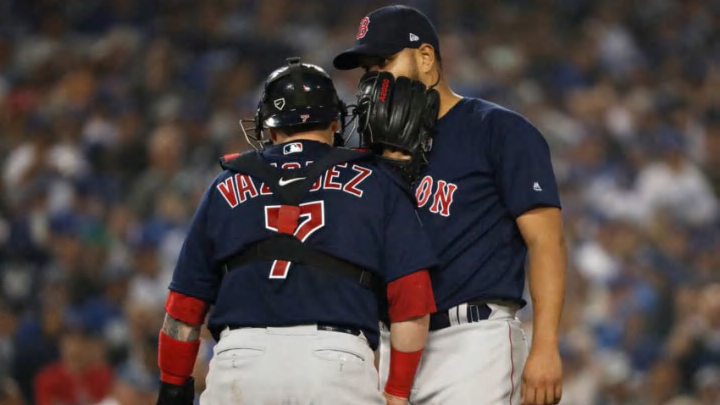
Finally, it’s a fair question why – needing only to protect a five-run lead for three outs – Cora went to his closer, Craig Kimbrel, to start the ninth.
More from Call to the Pen
- Philadelphia Phillies, ready for a stretch run, bomb St. Louis Cardinals
- Philadelphia Phillies: The 4 players on the franchise’s Mount Rushmore
- Boston Red Sox fans should be upset over Mookie Betts’ comment
- Analyzing the Boston Red Sox trade for Dave Henderson and Spike Owen
- 2023 MLB postseason likely to have a strange look without Yankees, Red Sox, Cardinals
The answer is probably the Mt. Everest answer: because it’s there. Kimbrel had started warming up before the top of the ninth got out of hand, and Cora likely felt his only options were to use him or put him on ice for the night.
The downside to that line of thinking is precisely what happened: Kimbrel had to throw 28 pitches, an inordinate load that may threaten his availability for Sunday night. Beyond that, they were lousy pitches. He walked the first batter he faced and followed that with a gopher ball to Kike Hernandez, shrinking the 9-4 lead to 9-6.
Even as hard as the Red Sox pen worked during Friday night’s 18-inning game, there must have been plenty of available arms Cora could have trusted with a five-run lead. Left-hander Drew Pomeranz hadn’t pitched the entire series; if this wasn’t a moment to get him some work, what was? David Price warmed up and could have come in to relieve Kimbrel, if not to start the inning, but did neither. Heath Hembree and Ryan Brasier were also both available.
If the Red Sox put the Dodgers away Sunday night – especially if they win by a margin not requiring a closer’s attention – this question will be rendered moot. But Kimbrel’s extensive work Saturday – atop the one and one-third innings he worked Friday — does raise a question about his effectiveness for a possible clincher Sunday.
